覔書店是深圳友誼書城旗下的復合型文化書店品牌。覔,通古文“覓”,取探索、尋覓之意。
Mi Reading (覔書店) is a multifaceted cultural bookstore brand under the banner of Shenzhen Friendship Bookstore. The character “覔” finds its origins in ancient Chinese script and is synonymous with “覓”, imbuing the concept with connotations of both exploration and pursuit.
▼入口,Entrance ? 聶曉聰
2014年,第一家覔書店在深圳紅山九方開業。經過近10年的探索和發展,2023年覔書店邀請MOC團隊共同創作一家里程碑式的旗艦店,在總結過往的同時也開啟對于品牌定位和空間形象的全新詮釋和探索。
In the year 2014, the first Mi Reading bookstore opened its doors at Shenzhen 9 Square Shopping Mall. Following nearly a decade of exploration and progressive growth, Mi Reading has now engaged the MOC team in a collaborative effort to establish a landmark flagship bookstore. This endeavor signifies more than a mere retrospective glance; it embodies a novel interpretation and investigation into the domains of brand positioning and spatial aesthetics.
▼入口處的主題展示區,Thematic display area at the entrance ? 聶曉聰
“我們希望這里相比于傳統書店或者僅僅把書店場景作為氛圍營造的商業空間,它更回歸本質,是一個充滿活力的社區中心。”
“Our aspiration is for this location to rediscover its core essence and transform into a dynamic community hub, distinguishing itself from conventional bookstores or commercial venues that simply evoke an atmosphere through bookstore settings.”
—— 楊振鈺
Yang Zhenyu, Designer
項目位于廣州黃埔,定位于文化型共享社區。設計師從城市歷史中吸取靈感,從“絲綢之路”的在地文化脈絡中,提取航船的風帆、南海古厝群等為元素,將現代美學與復合式的社區文化生活結合,將圖書閱讀、劇場、學習、兒童繪本、咖啡、藝文活動、展覽、交流等功能融合其中,旨在為周邊的居民提供一個舒適、輕松的人文社區。
The bookstore is located in Guangzhou Huangpu and is designed as a culture sharing hub for the community. Inspired by the local history and the Silk Road, the designers incorporate the imagery of sailing ships, Nanhai ancient house clusters and other elements into the modern aesthetics. The multi-functional space combines book reading, theater, learning, children’s books, coffee, art, exhibitions, and community activities, creating a comfortable and relaxing cultural environment for the nearby residents.
▼入口通道,The passage at the entrance ? 聶曉聰
01 文化劇場
Cultural Theater
隨著時代的發展,知識傳播的媒介不僅局限于書本,傳統書店“知識交換”訴求變得更加復合,從單一的人與書的關系,到人與人的知識交換,空間的功能也對應的需要更加多元。
With the advance of time, the means of disseminating knowledge have transcended traditional books. The conventional bookstore’s pursuit of “knowledge exchange” has grown more intricate, shifting from a mere relationship between individuals and books to a dynamic exchange of knowledge among people. Consequently, the spatial requirements have become more diverse.
▼兩層通高的公共劇場,頂部造型取自航船的風帆為元素,回應在地文化,A double-height public theater with a roof design inspired by the wind sails to respond to local culture ? 聶曉聰
基于這種思考,設計師將兩層的場地中部打通,形成一個開敞通透的的通高中庭,使兩層空間更加流暢開闊。大面積階梯式的座位的置入構建了一個開放的公共活動空間,因此也重構了兩層空間的交通動線與形式。
Driven by this perspective, the designer has opened up the central sections of the two-story venue, giving rise to a luminous and spacious double-height atrium that enhances the flow of the space. The integration of expansive tiered seating has not only fostered an open arena for communal activities, but has also meticulously reconfigured the spatial circulation and morphology of two levels.
▼另一側設置連通二層的樓梯,保證了公共活動時的交通動線互不影響,A staircase on the opposite side connects the second floor, ensuring seamless circulation during public events ? 聶曉聰
在日常情況下,大階梯是一個閱讀區,是人流匯聚和交流的場所,根據活動類型的不同,還可以作為研學會、講座等公共活動的場所。
The grand staircase, under typical circumstances, serves as a delightful reading area and a welcoming gathering spot. Depending on the occasion, it effortlessly transforms into a versatile venue for hosting diverse public events like study sessions and enlightening lectures.
▼從公共階梯座位看向劇場舞臺,View of the theater stag e from public staircase seating ? 聶曉聰
在階梯上至二層的位置,一個懸挑的“紅色盒子”被安置在此處,盒子里布置了幾個不同尺度的房間,面向劇場舞臺方向,作為劇場功能的補充;落地玻璃的展示面則提示人們在這里“交流討論”是被鼓勵的,另一方面則保證了這里與公共空間的聲音不會相互干擾。“紅色盒子”的下方形成的小空間,則自然的形成了開放式的小型協作討論區。圍繞著劇場階梯組織的不同的交流協作區,讓交流的方式更加的多樣化。
▼劇場與“紅色盒子”關系說明 ? MOC DESIGN OFFICE
The structural connection between the theater and the “red box”
Positioned where the staircase leads to the second floor, an extended “red box” projects outward. This architectural feature houses different-sized rooms, all oriented towards the theater stage, thereby complementing the theatrical function. The floor-to-ceiling glass display surfaces also encourages people to exchange and discuss while ensuring a noise-free coexistence with the public area. Beneath the “red box”, a compact space naturally evolves into an open, small-scale collaborative discussion area. Different communication and collaboration zones are strategically organized around the theater stairs, enhancing the diversity of interaction modes.
▼面向劇場舞臺的“紅色盒子” ? 聶曉聰
The “red box” facing the theater stage
▼“紅色盒子”的下方形成的小空間 ? 聶曉聰
A compact space beneath the “red box”
▼二層“紅色盒子”入口,Entrance to the “red box” on the second floor ? 聶曉聰
劇場區域通高的空間結構,設計師通過連續的完整的書柜矮墻完成圖書氛圍的橫向延續和銜接,同時視覺縱線上也達成了不間斷的效果。前矮后高的書柜格局,也使圖書的呈現更具空間感。空間的頂部,設計師從城市歷史中吸取靈感,在“海上絲綢之路”的在地文化脈絡中,提取航船的風帆為元素,在空間頂部鋪陳開來,回應城市在地性文化。
The elevated spatial design of the theater is accomplished by a sequence of uninterrupted low bookshelf walls. These walls not only horizontally extend and unify the bookish ambiance, but also establish an unbroken visual vertical element. The arrangement of shorter bookshelves in the foreground and taller ones in the background further accentuates the spatial representation of the books. The rooftop pays homage to the city’s maritime heritage with the sail-inspired elements, reflecting the local culture.
▼天花板提取航船的風帆為元素,The ceiling takes the sails of sailing ships as elements ? 聶曉聰
▼從二層看向公共劇場,View of the public theater from the second floor ? 聶曉聰
02 動與靜的平衡——各得其所的共享社區
Balancing dynamics and tranquility – a shared community in harmony
書店是一座城市精神的見證,也是文化成長的庇護所。這里不僅吸引愛書之人,更是兼容各色人群文化需求的場所。設計師以中間的文化劇場和公共閱讀區為界,進行動靜布局考量,向左規劃為兒童區和 “小小覔”繪本館,向右則規劃休閑社交功能的”覔咖啡”,以及咖啡上方的獨立自習室和沉浸式劇場。隨著動線的深入,實現從喧囂到沉靜的轉變,也讓不同的人群都能在這里找到適合自己的空間。
▼分析圖,analysis diagram ? MOC DESIGN OFFICE
A bookstore serves as both a testament to a city’s ethos and a sanctuary for cultural maturation. Beyond merely captivating book lovers, it functions as a space that accommodates a mosaic of cultural demands. The designer, with careful consideration for the arrangement of active and serene areas, delineates a conceptual boundary between the central cultural theater and the communal reading space. To the left, a dedicated children’s area and the “Little Mi” picture book library find their place, while to the right, the convivial hub of Mi Café is planned, alongside an elevated independent study room and an immersive theater above. As the pathways lead further, a transition from dynamic to serene environments is achieved, ensuring that diverse individuals can find their suitable spaces within this locale.
▼覔咖啡入口,取自古厝屋頂的瓦片,以現代的語言得以轉譯呈現,Entrance of Mi Café, inspired by the roof tiles of ancient houses and presented in a modern language ? 聶曉聰
“覔咖啡”作為社交空間被規劃在劇場的一側,設計師以傳統古厝群的聚合院落為線索展開布局。抽象形態的屋厝框架構成錯落有致的微型院落組合,同時也隨之自然的劃分出屋舍與通道。屋舍融合座位和景觀,讓人與空間互為流轉的風景。
Mi Café is artfully positioned as a social haven on the theater’s periphery. Drawing inspiration from the harmoniously arranged courtyards within traditional ancient residences, the designer thoughtfully orchestrates the layout. The abstract form of the house frames leads to well-organized miniature courtyards, concurrently defining dwelling spaces and pathways. The integration of seating and landscapes within these structures facilitates a dynamic interplay, allowing for the interaction between individuals and their surroundings.
▼屋舍融合座位和景觀,The integration of seating and landscapes within the structures facilitates ? 聶曉聰
劇場的另一側是兒童區,這里原本是室外階梯的底部空間,活潑的空間色彩和白色的喇叭形盒子的置入突出了傾斜頂面并創造出趣味性的空間體驗。白盒子里的樓梯連通兒童區與兒童繪本館,讓相對熱鬧的兒童區上下貫通,并與其他安靜的閱讀區在動線上各自獨立。
Adjacent to the theater lies the children’s area, which was originally the external lower space of the staircase. The vibrant color scheme and the inclusion of the white horn-shaped enclosure emphasize the slanted ceiling and create an enchanting spatial encounter. Within the white enclosure, stairs interlink the children’s area with the picture book library, enabling smooth vertical movement within the comparatively lively children’s zone and maintaining distinct circulation from the quiet reading area.
▼一層兒童區的白色喇叭形盒子,
The white horn-shaped box in the children’s area on the first floor ? 聶曉聰
沿著喇叭盒子的樓梯進入二層的繪本館,色彩也隨之在統一的色調下豐富起來。在色彩的變奏之下,書架放置著分齡的兒童繪本,穿插其中的開放座位讓家長與孩子在其中共渡美好的親子閱讀時光。
Ascending the stairs within the horn-shaped enclosure brings visitors to the second-floor picture book library, where the color palette gains richness while adhering to a coherent tonal scheme. Amidst this chromatic interplay, bookshelves host age-appropriate children’s picture books, interspersed with open seating areas that offer a delightful space for parents and children to enjoy precious moments of shared reading.
▼二層的兒童區入口,Entrance to the children’s area on the second floor ? 聶曉聰
▼二層的繪本館,The second-floor picture book library ? 聶曉聰
▼公共閱讀區與紅色盒子,Public reading area and the “red box” ? 聶曉聰
穿過挑空中庭走廊的公共閱讀區,可供人們獨立學習的自習室和沉浸式劇場位于空間安靜的一角。人們在自習室可以安靜的學習和思考,抬眼望去的城市綠化也能在掩卷之間放松心情。
Crossing the atrium corridor leads to the public reading area, where the self-study room and immersive theater are nestled in a serene corner of the space. Within the self-study room, individuals can engage in undisturbed learning and contemplation. The view of urban greenery through the windows offers a soothing backdrop that aids relaxation between study sessions.
▼自習室入口,Entrance to the study room ? 聶曉聰
▼自習室,The study room ? 聶曉聰
在這次從傳統的商業書店到文化型共享社區的設計實踐中,設計團隊在開放的基礎上,以更加現代包容的方式,打造復合型的城市文化空間,為城市帶來更多活力。
In the journey from a conventional commercial bookstore to a culture-centered shared community, the design team has harnessed an open foundation, using a contemporary and inclusive approach to forge a composite urban space that injects greater vibrancy into the city.
▼平面圖,Plan ? MOC DESIGN OFFICE
項目名稱:覔書店,廣州黃埔大悅匯項目
設計單位:MOC DESIGN OFFICE?
主持設計:楊振鈺,梁寧森
設計管理:吳岫微
設計團隊:梁秋紅,吳峰,吳心鴻
設計周期:2023.1-2023.3
竣工:2023.7
項目地址:廣州市黃埔區大悅匯4層
面積:2470㎡
主材:人造石,木飾面,木紋貼膜,瓷磚,地毯,烤漆板,肌理漆
業主:覔書店
攝影:聶曉聰
Project Name: Mi Reading, Joy Citizen, Guangzhou Huangpu
Design Company: MOC DESIGN OFFICE
Leading Designers: Yang Zhenyu, Liang Ningsen
Project Manager: Wu Xiuwei
Design Team: Liang Qiuhong, Wu Feng, Wu Xinhong
Design Phase: January 2023 – March 2023
Completion Time: July 2023
Project Location: L4, Joy Citizen, Huangpu District, Guangzhou
Area: 2470 ㎡
Materials: Artificial stones, wood veneers, wood grain adhesive films, ceramic tiles, carpets, baked lacquer boards, textured paint
Client: Mi Reading
Photography: Nie Xiaocong
更多相關內容推薦


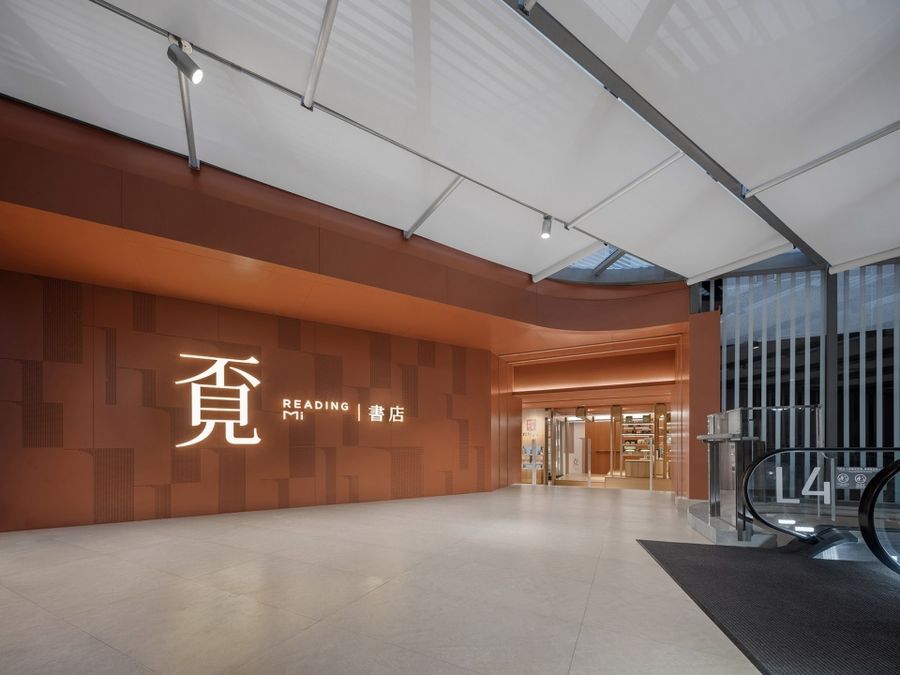
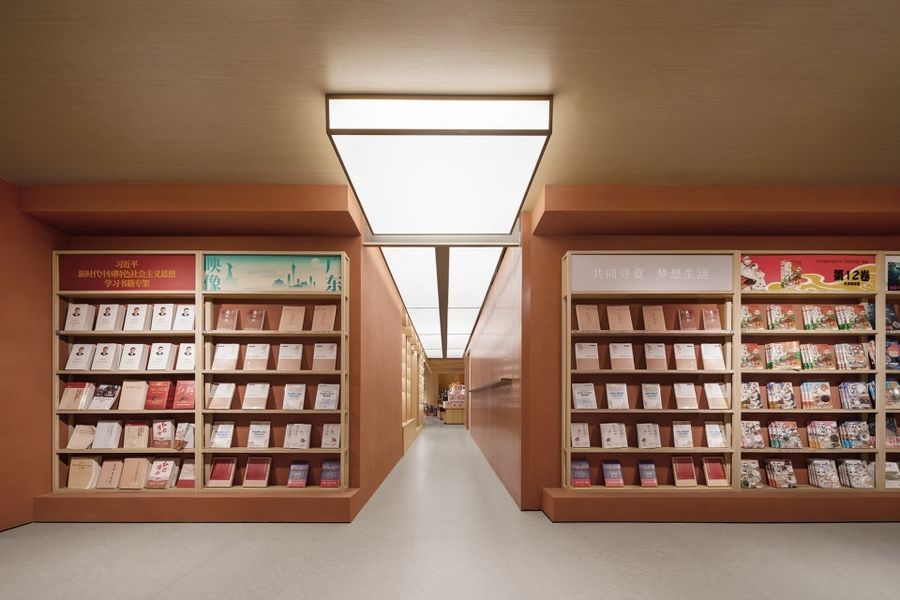
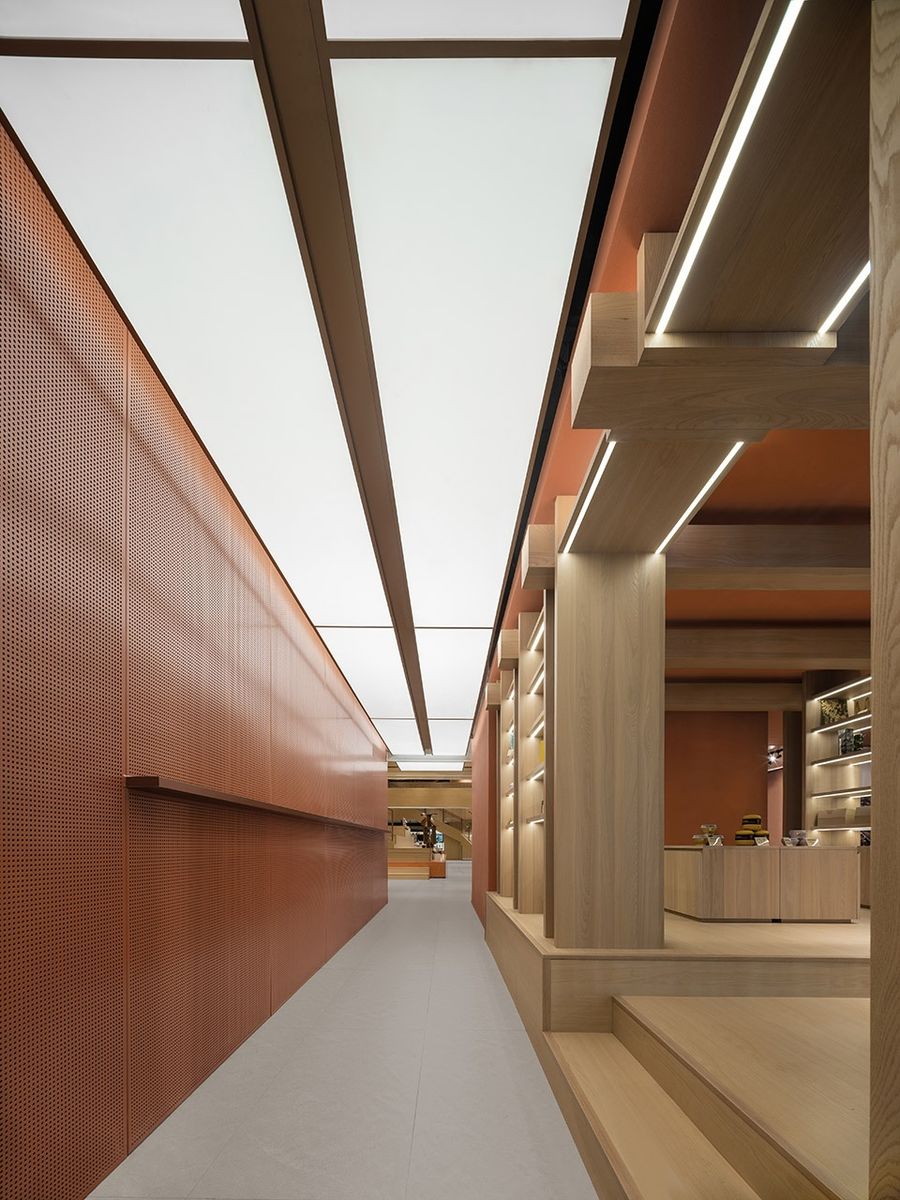
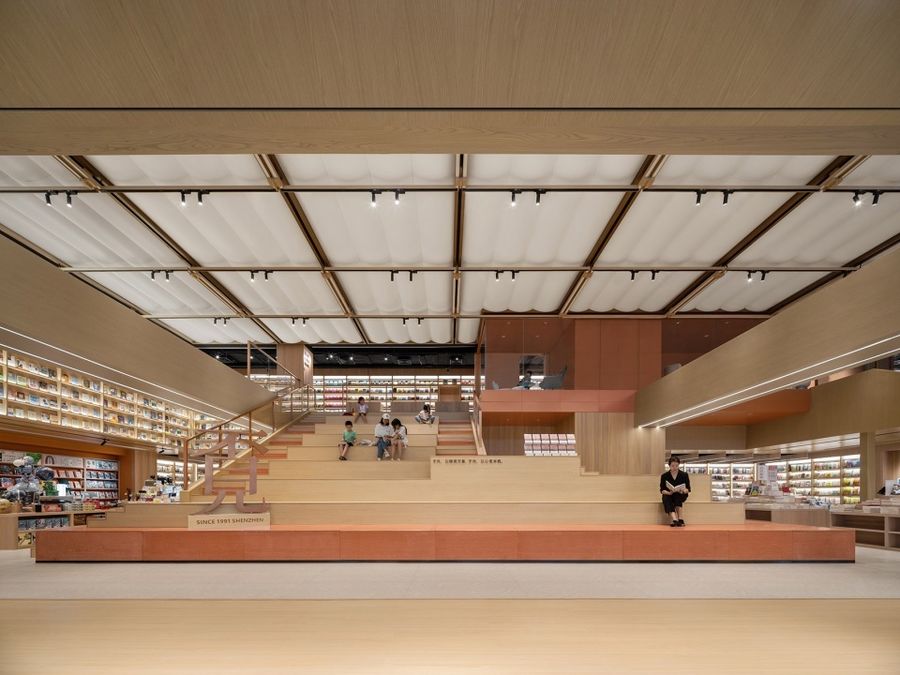
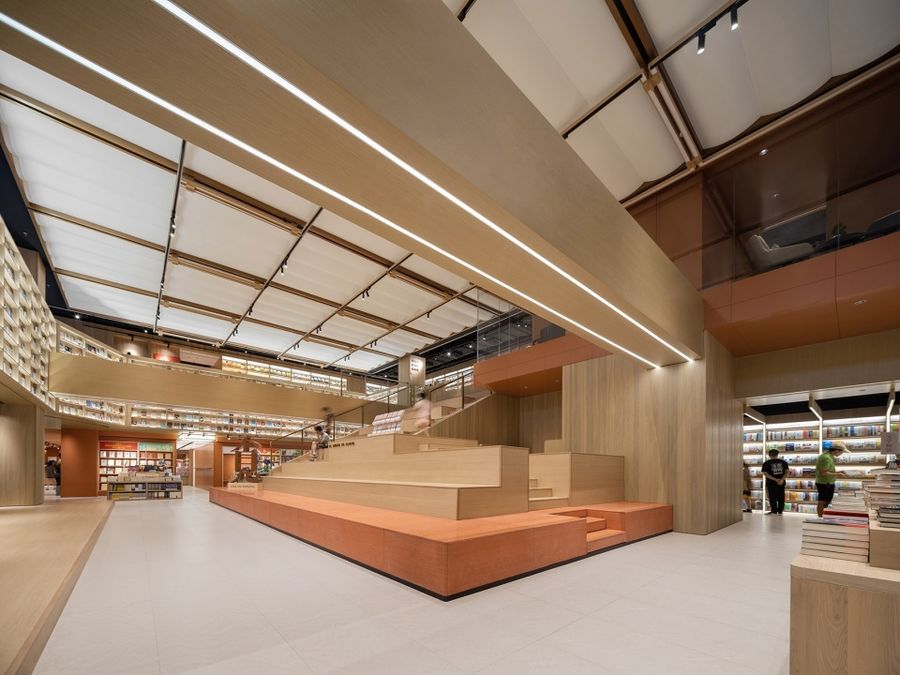
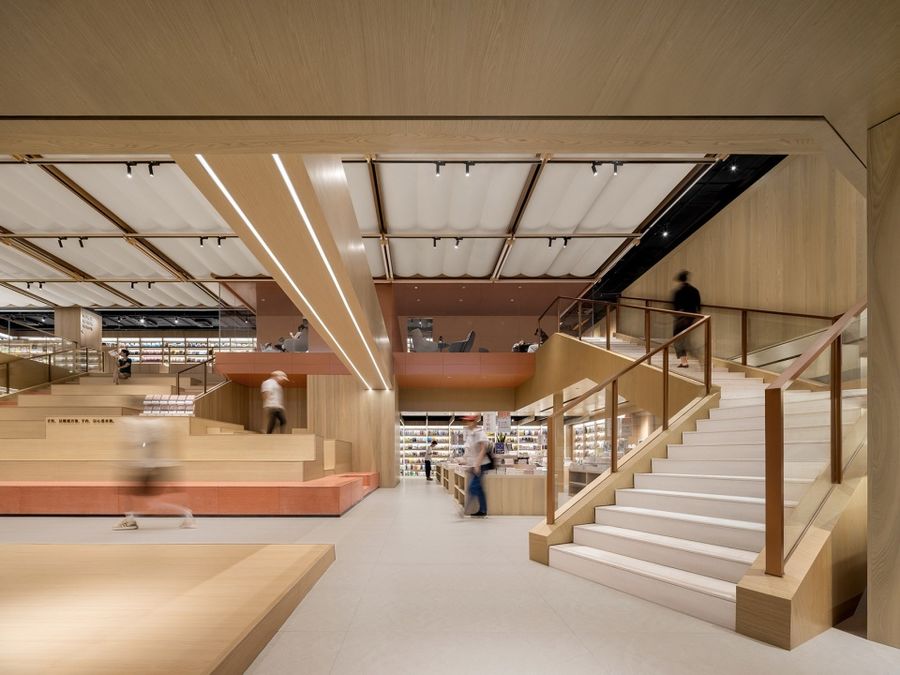
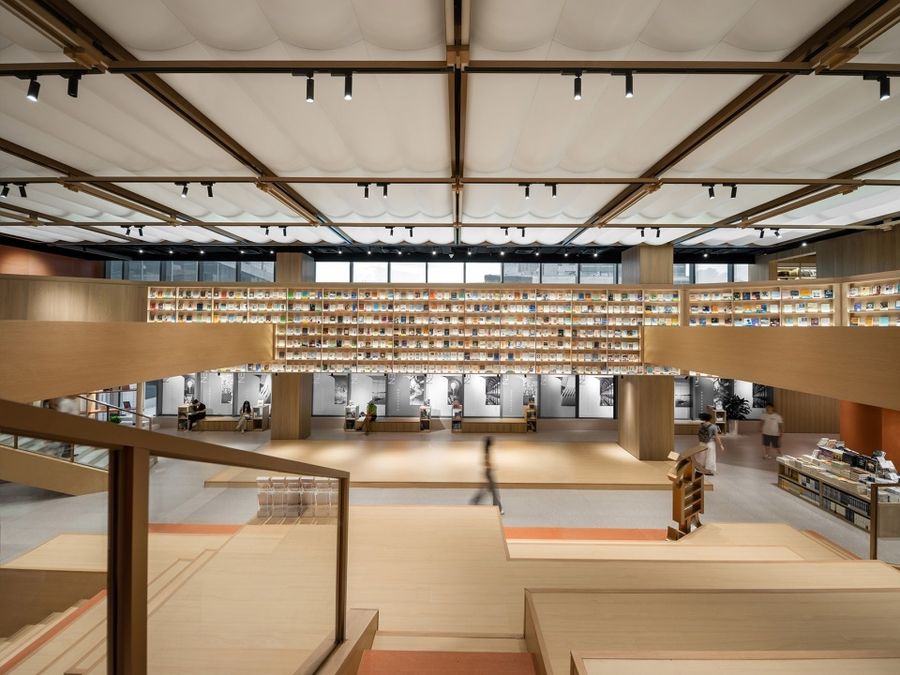
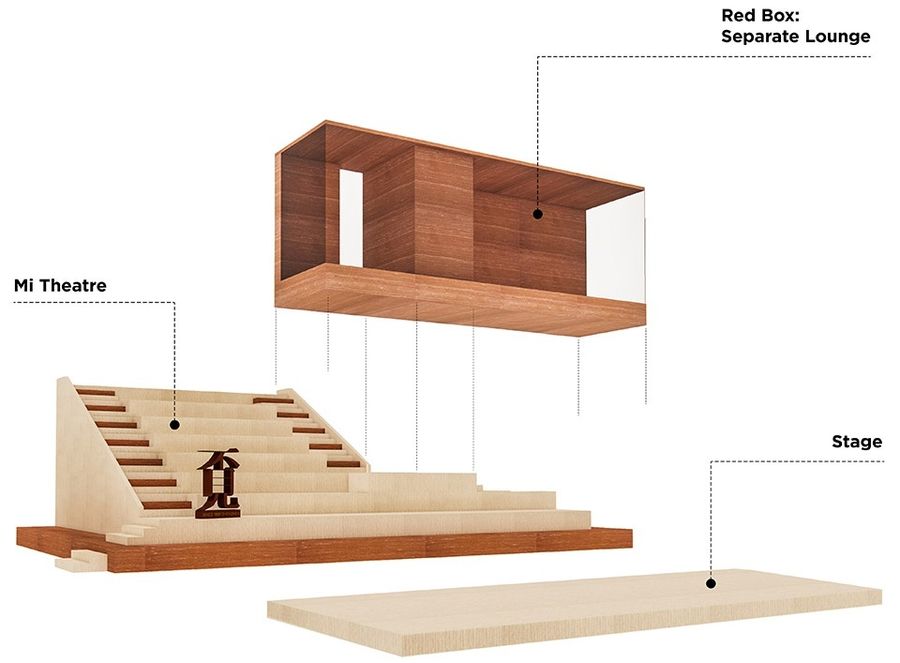
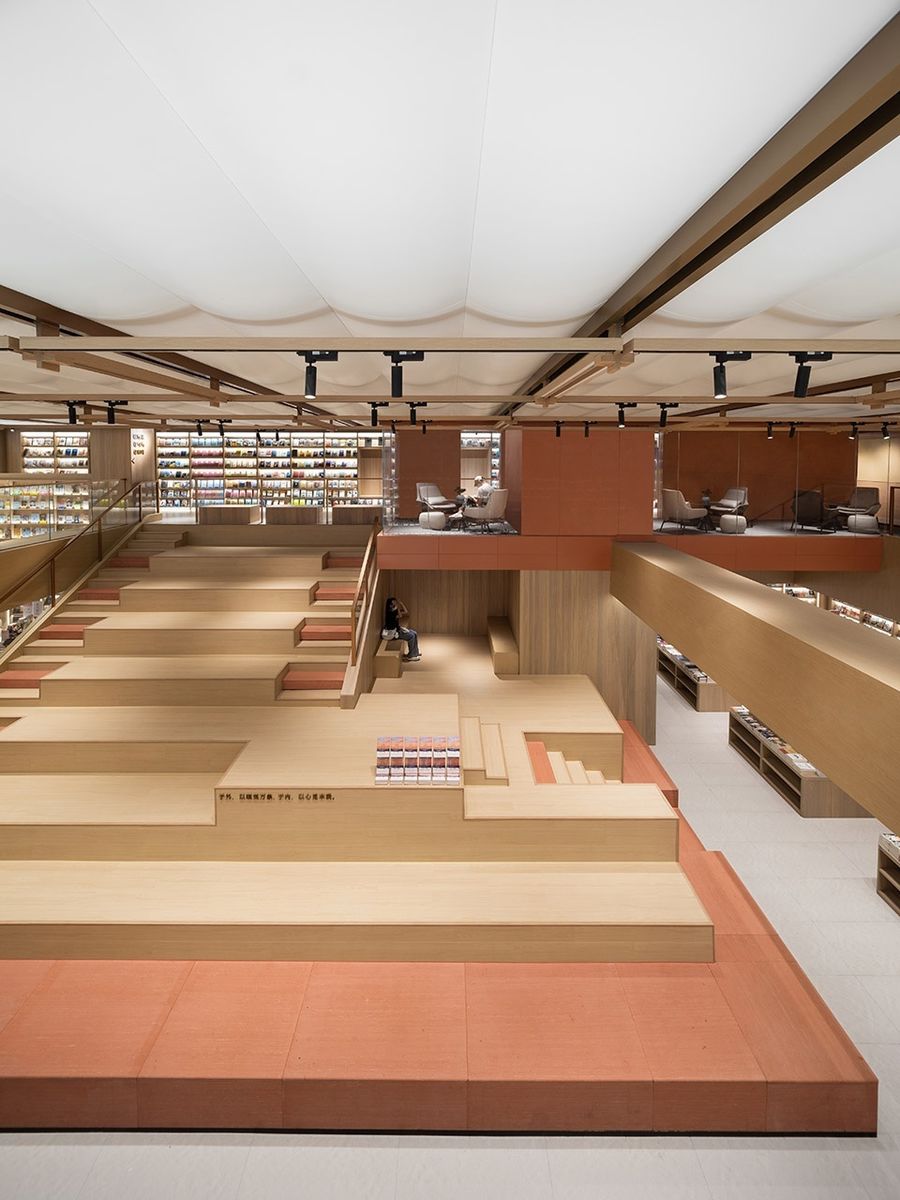
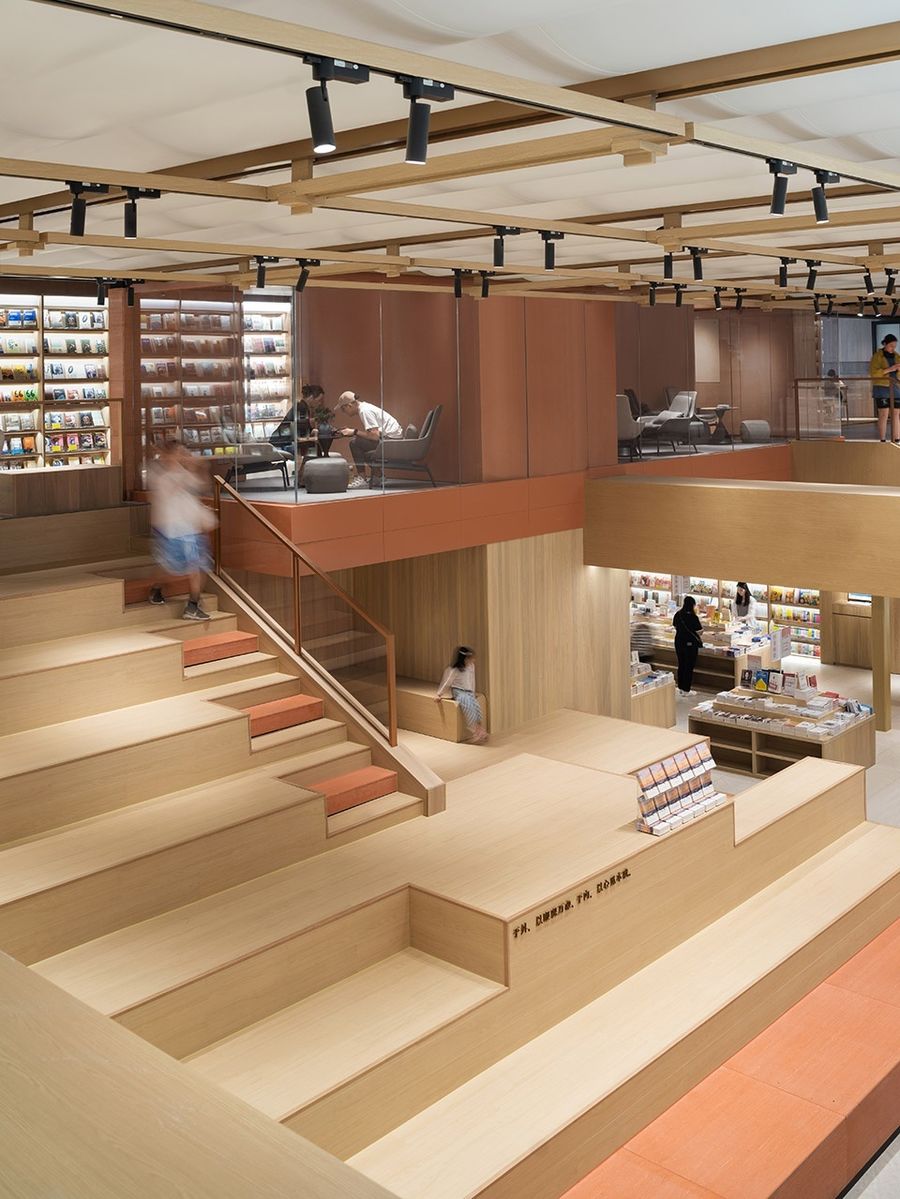
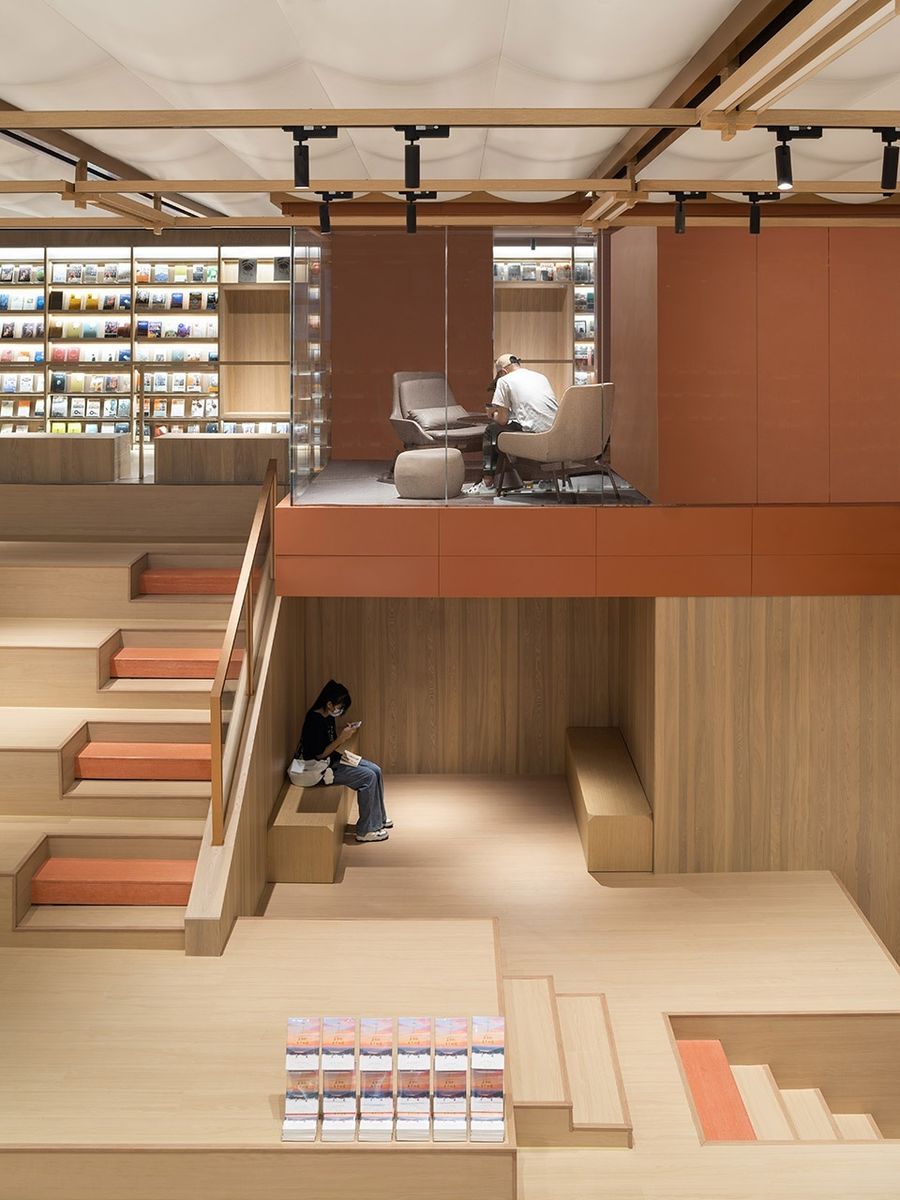
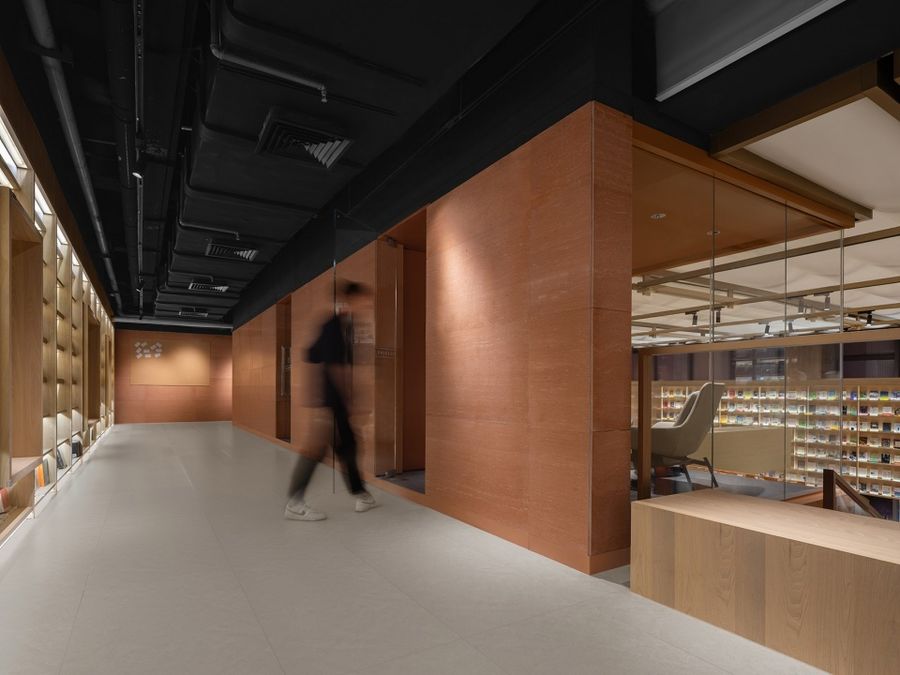
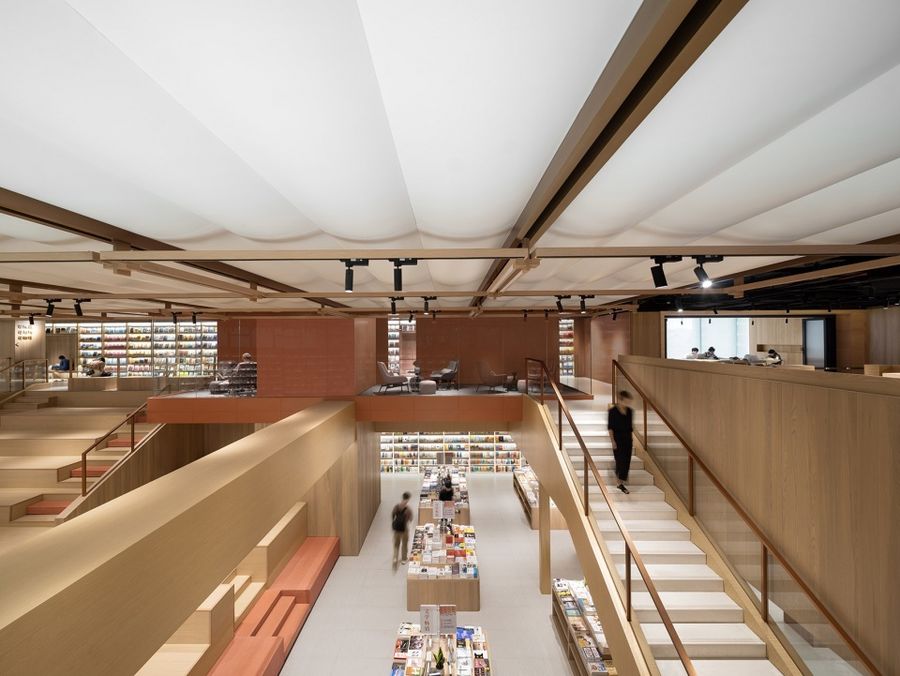
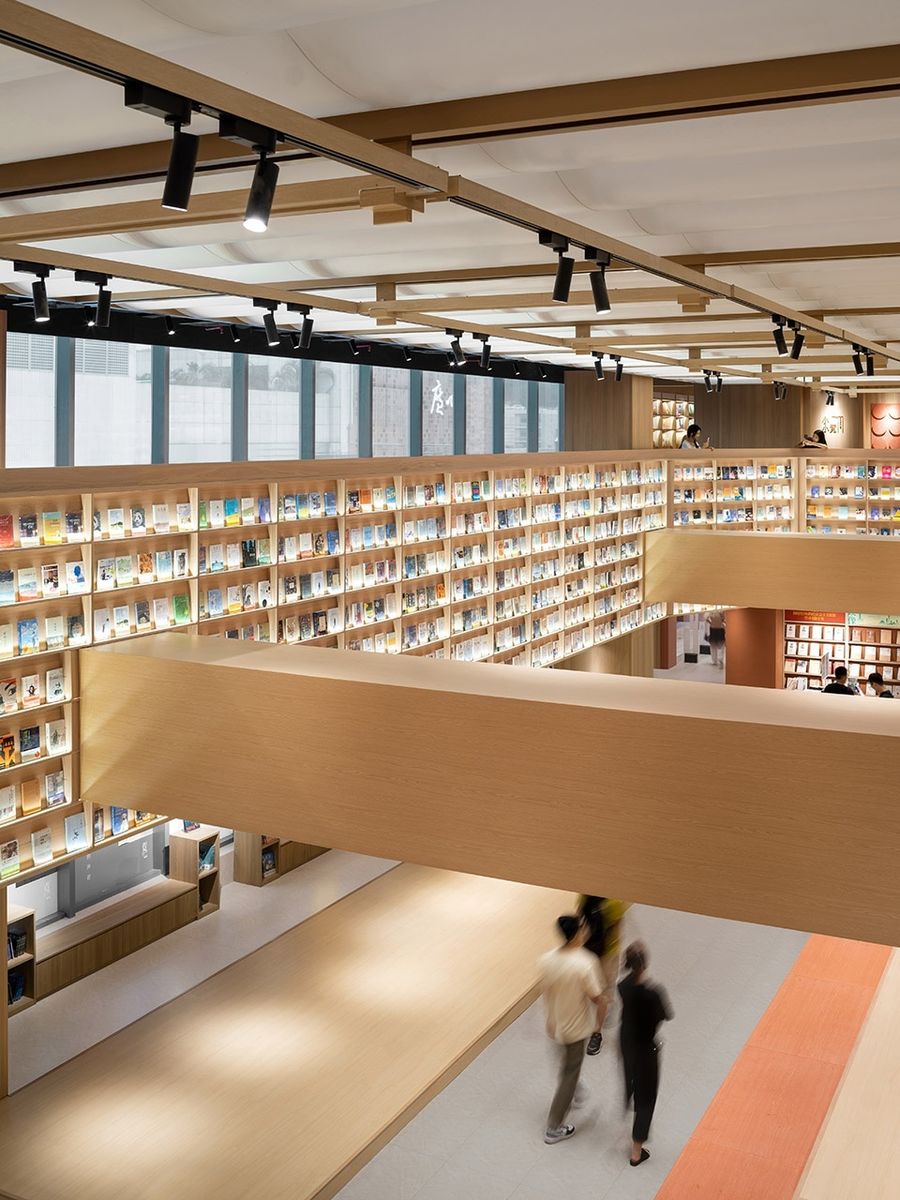
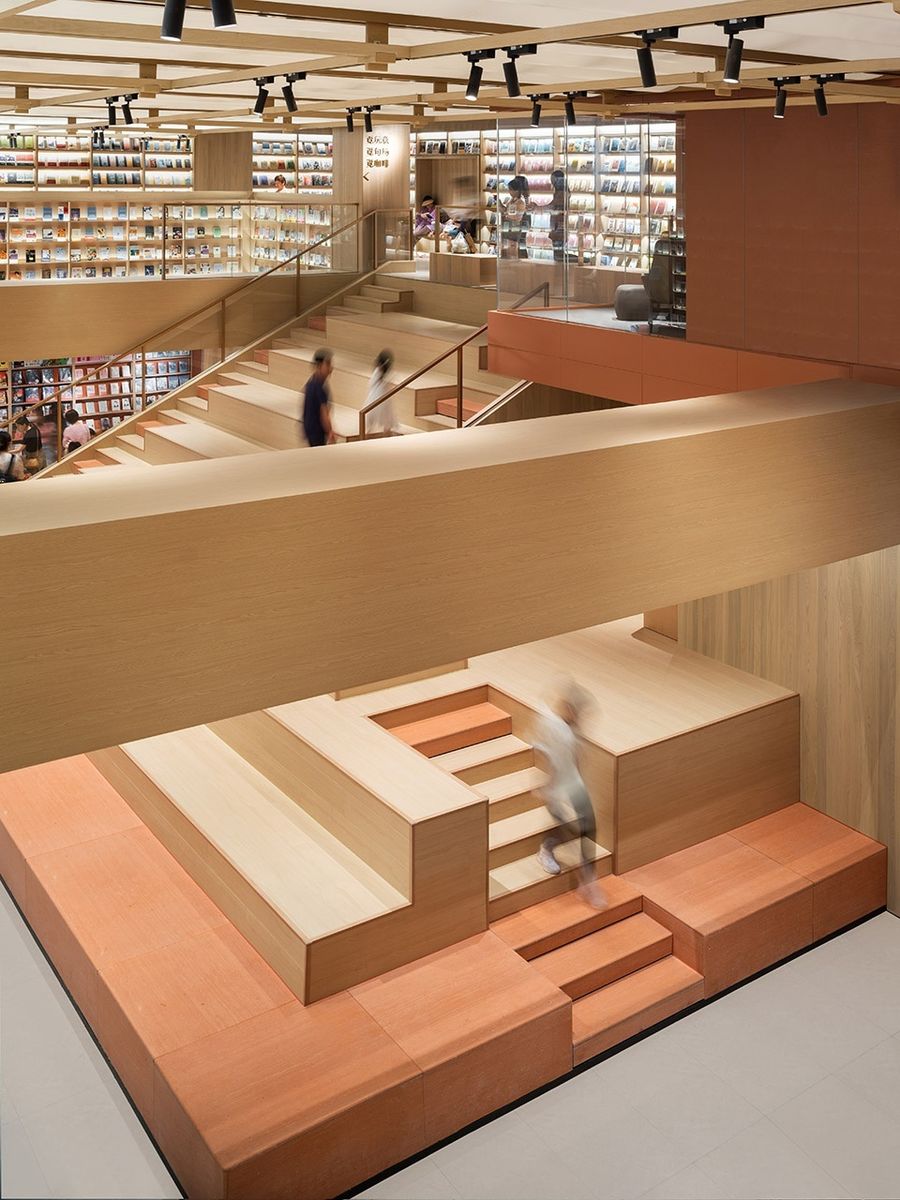
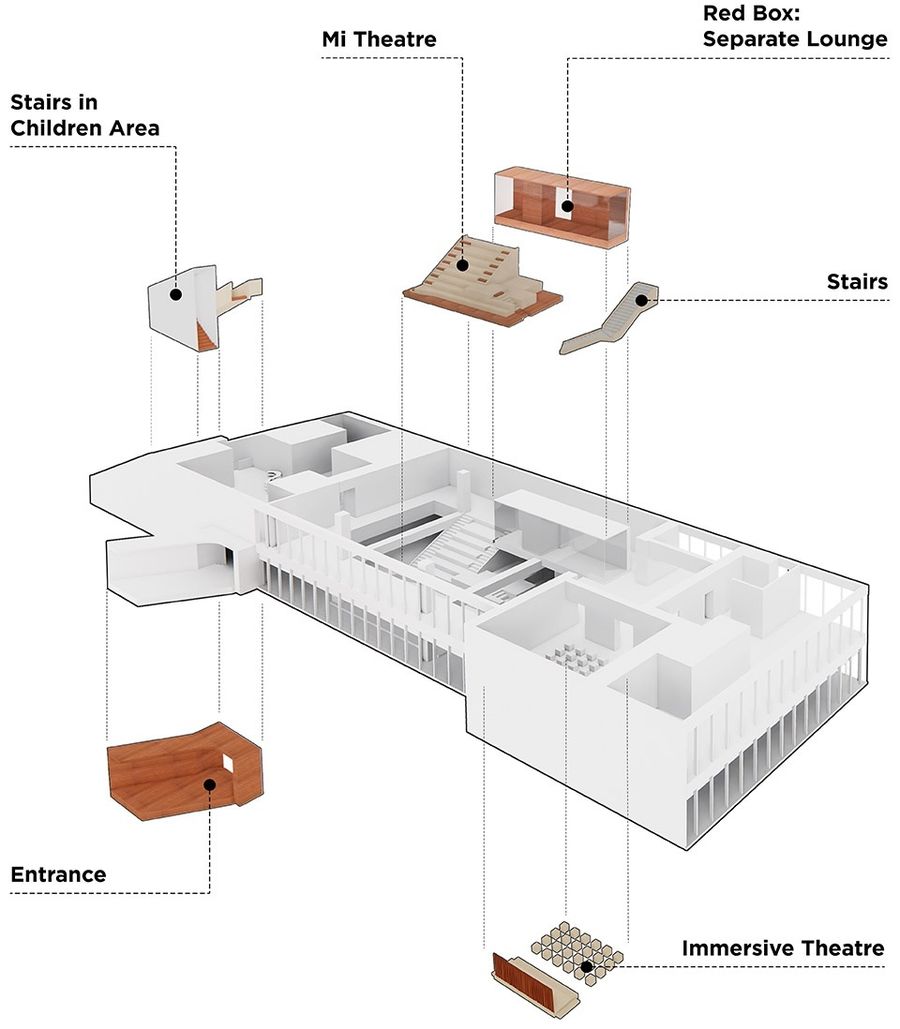

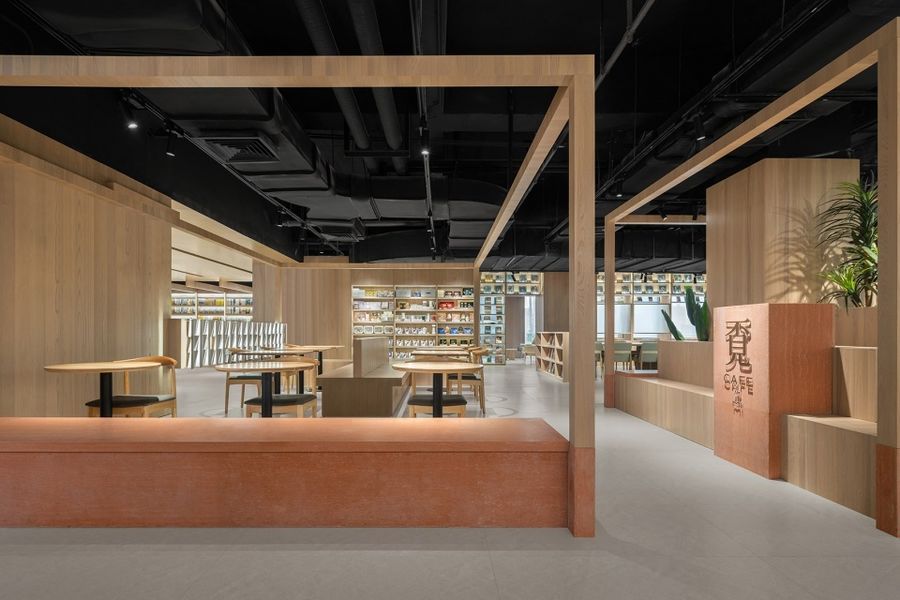
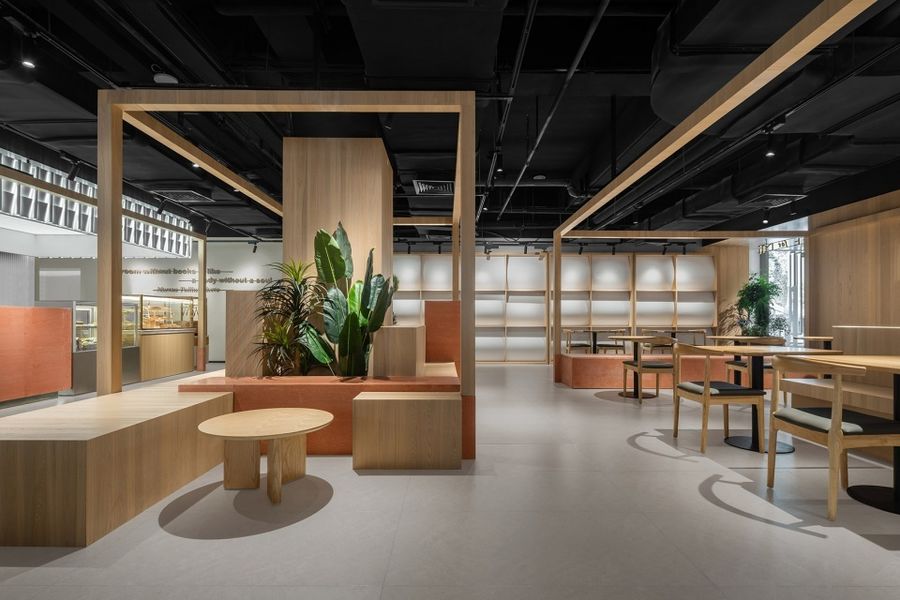
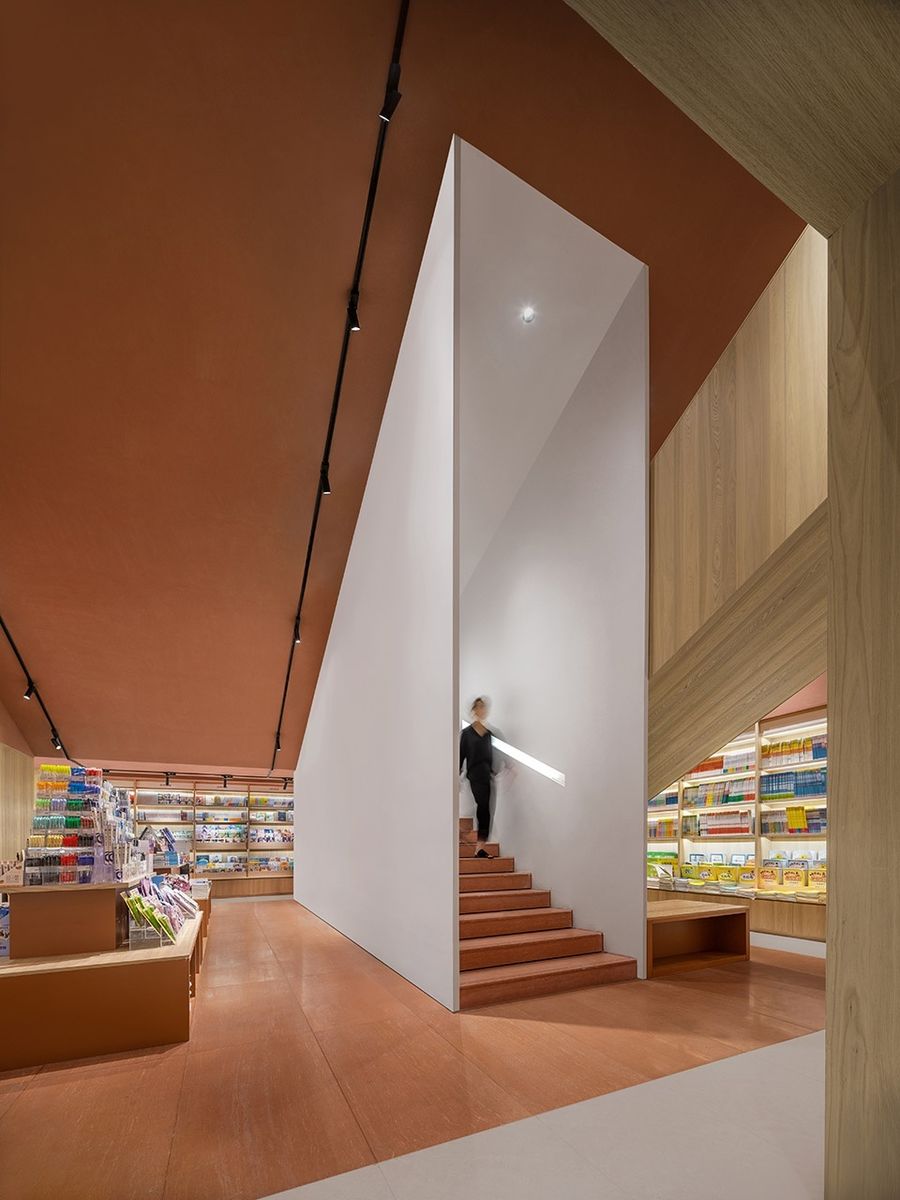
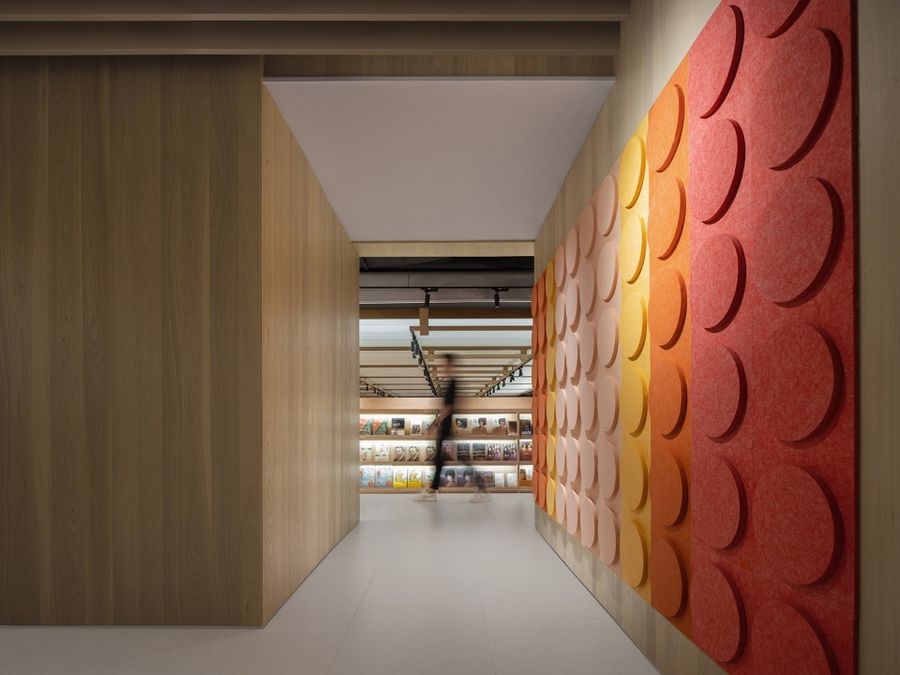
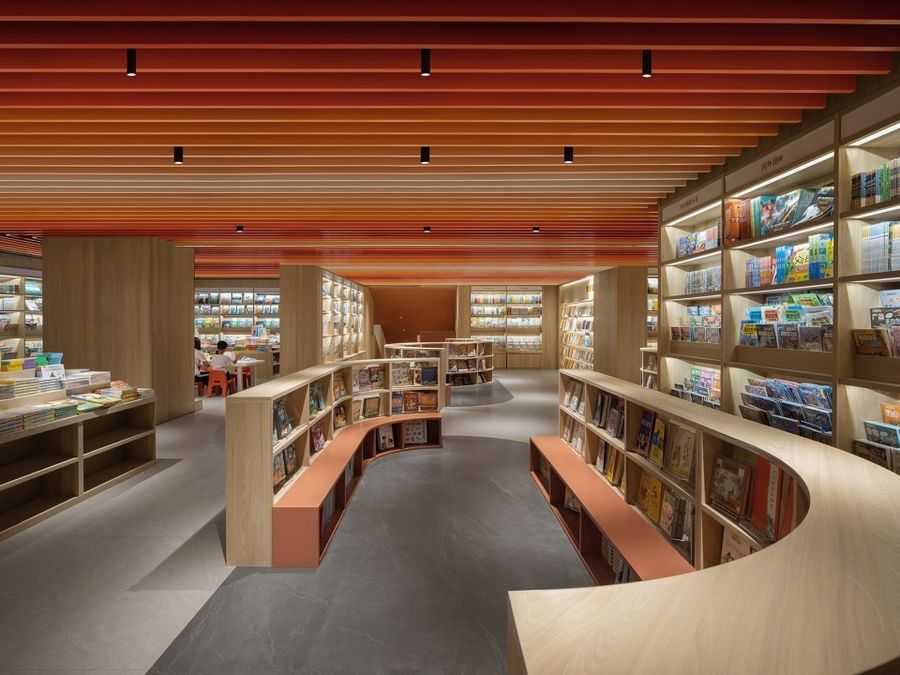
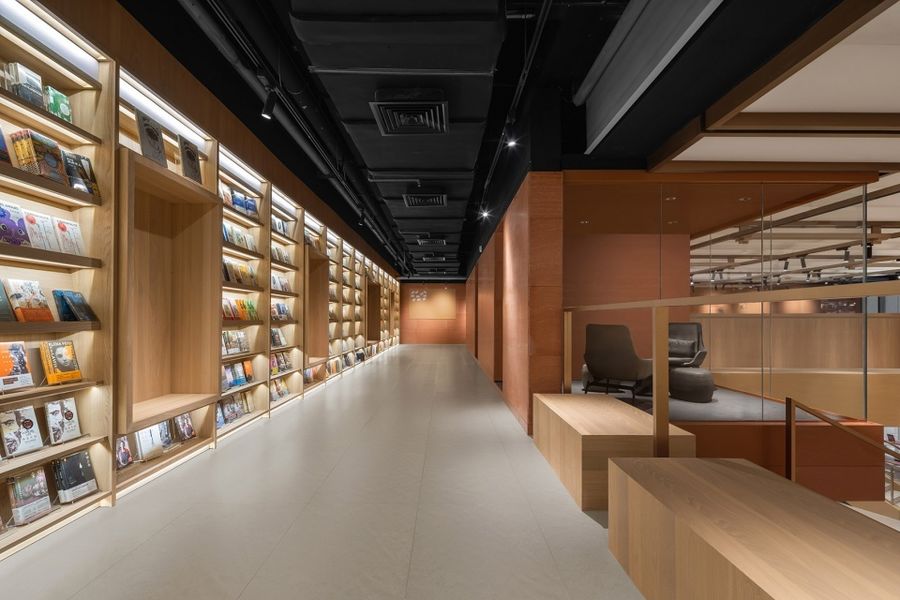
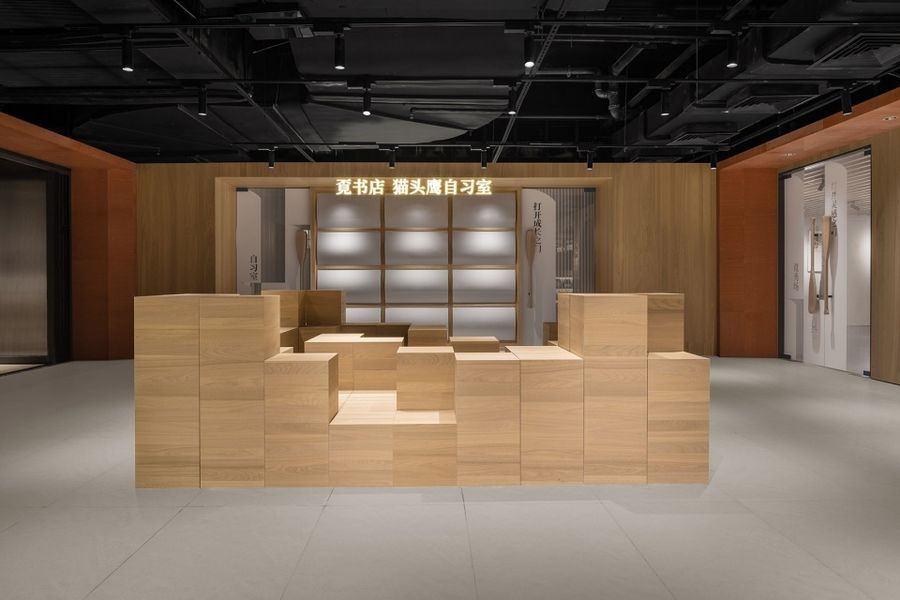
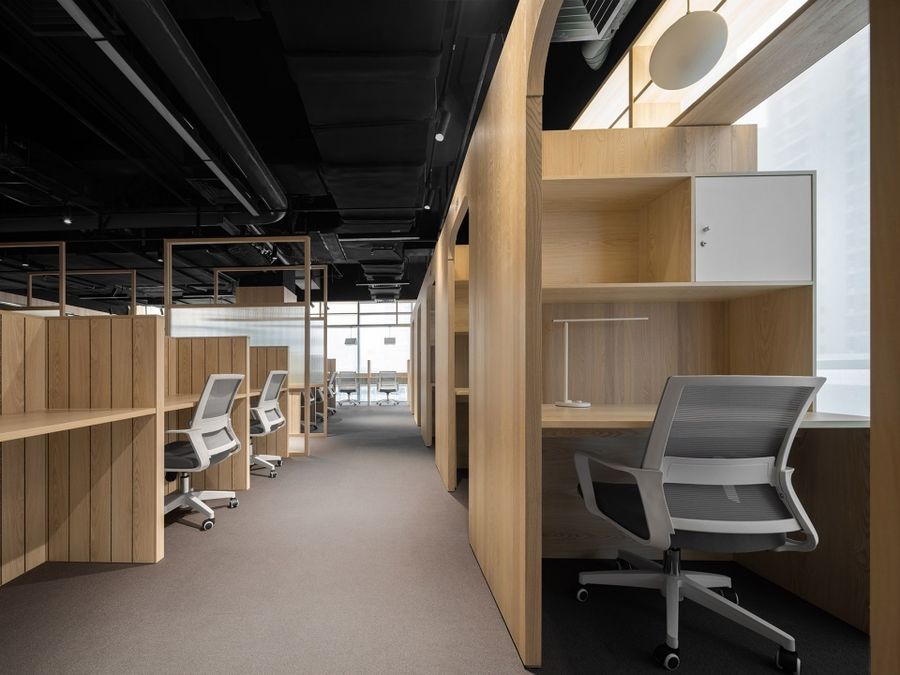
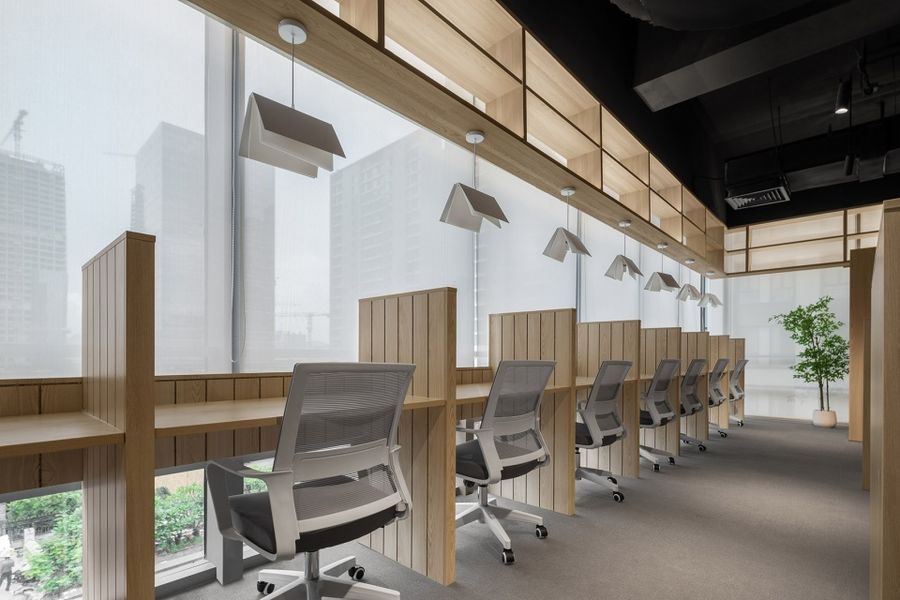
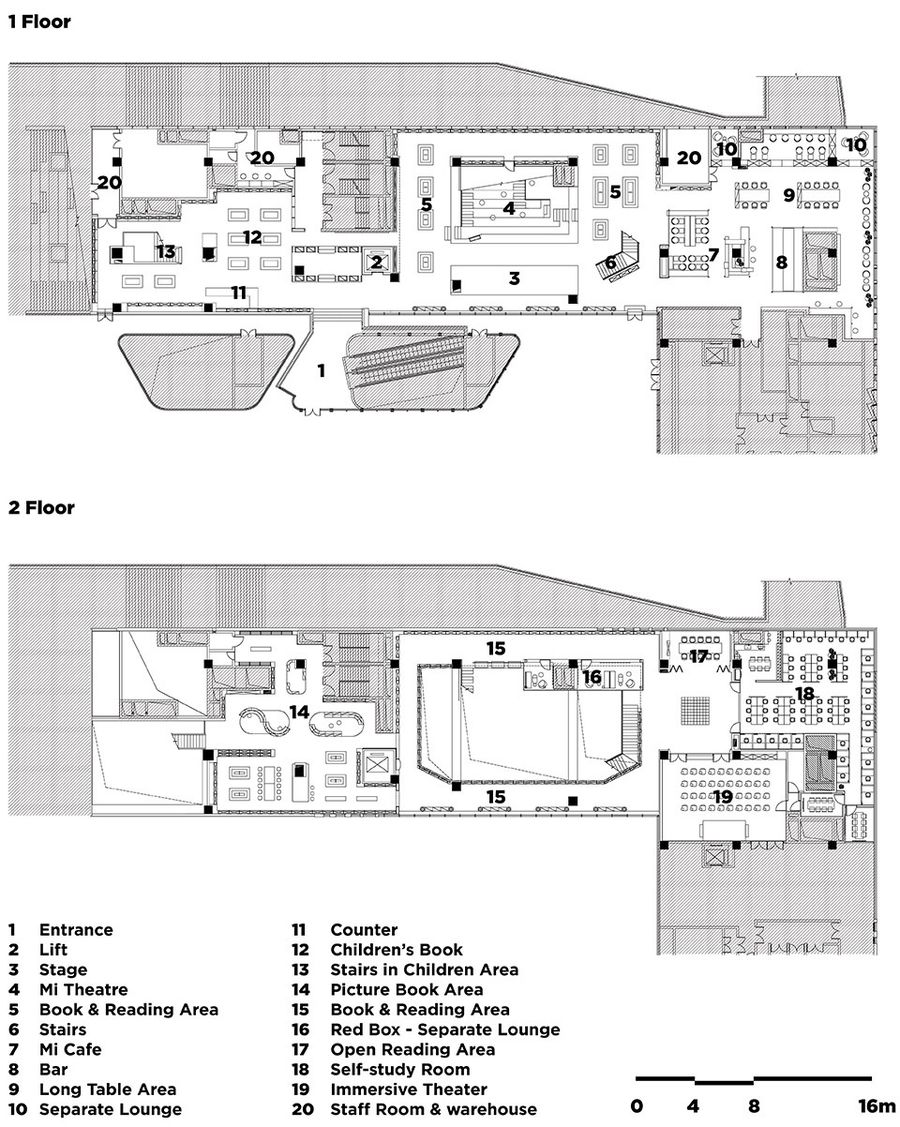





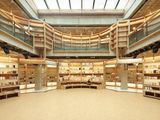





評論(0)